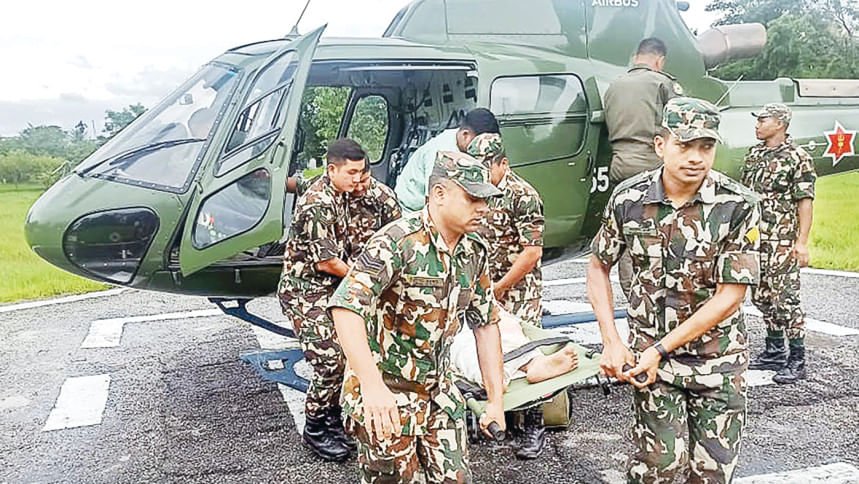Heavy rainfall in Nepal and nearby India has led to landslides and floods, resulting in the deaths of over 60 individuals, according to authorities. Rescue operations are underway to reach isolated communities in the rugged mountainous areas.
Nepal has been experiencing continuous torrential downpours since Friday, causing rivers to overflow and numerous regions in the Himalayan country to be submerged.
The National Disaster Risk Reduction and Management Authority spokesperson, Shanti Mahat, stated that at least 44 people have lost their lives due to rain-induced incidents, with five individuals still unaccounted for. The eastern district of Illam, where at least 37 people perished in landslides, has been the most severely affected.
Local district official Sunita Nepal attributed the landslides to heavy overnight rains, complicating rescue efforts due to blocked roads.
In Kathmandu, the capital, rising river levels have led to flooding in settlements along the banks, necessitating the deployment of security personnel equipped with helicopters and motorboats for rescue operations.
Despite the damage caused, some residents managed to secure their belongings in safe locations following flood alerts from the authorities, as confirmed by Rajan Khadga, a local vegetable vendor.
The landslides have resulted in road closures and flight disruptions, leaving numerous travelers stranded, including those returning from celebrating the Dashain Hindu festival.
As per federal disaster officials, five individuals are still missing, while Prime Minister Sushila Karki assured the public of the government’s readiness for rescue and relief efforts.
In neighboring India, over 20 individuals lost their lives in Darjeeling, West Bengal, due to flash floods and landslides caused by heavy overnight rains. Lawmaker Harsh Vardhan Shringla reported the casualties in the tea-growing hill district.
Indian television footage depicted rescue teams using cables to access isolated areas as floodwaters damaged infrastructure. Prime Minister Narendra Modi expressed sorrow over the fatalities and reassured the public of close monitoring of the situation in Darjeeling and surrounding regions.
India’s meteorological department issued a red alert for “extremely heavy rainfall” in sub-Himalayan areas, including Darjeeling, until Monday. Meanwhile, in Bhutan, rising river levels led to the Indian army joining rescue operations to evacuate stranded civilians in Phuentsholing.
Monsoon rains, a regular occurrence from June to September, bring widespread devastation annually across South Asia. However, the increasing frequency and severity of fatal floods and landslides in recent times are believed to be exacerbated by climate change, according to experts.
The International Centre for Integrated Mountain Development in Kathmandu had previously cautioned communities about heightened disaster risks during this monsoon season in June.

